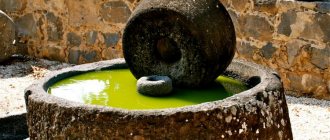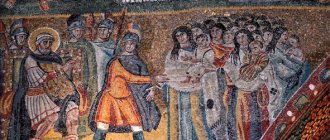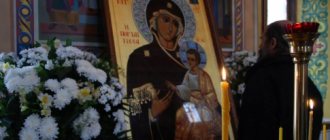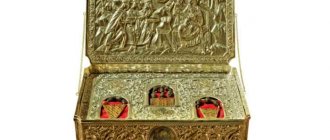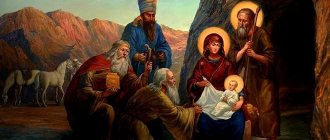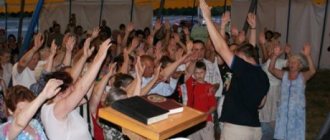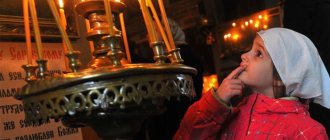Origin and early years
Herod was born in 74 BC. in the family of the procurator of Judea Antipater, a native of the Idumean people. Antipater actively supported the expansion of the Roman state into Judean land. After the conquest of Judea in 63, he became the de facto ruler of these lands.
Just like his father, Herod supported the Roman government, seeking to expand its influence eastward. In 48, he became procurator of Galilee, where he earned the approval of the Romans in connection with the suppression of the Jewish uprising under the leadership of Hezekiah. A year later, the young procurator becomes a full citizen of Rome.
King Herod the Great
In 40, the Parthian advance into Judean territory forced him to flee through the Idumean lands, first to Egypt and then to Rome. The talented politician quickly gained the support of Emperor Mark Antony, who introduced him to the Senate and insisted on being elected “King of Judea.”
Massacre of the innocents
All the positive character traits of Herod faded with age. By old age, the monarch turned into a merciless and suspicious tyrant. Before him, the kings of Israel often became victims of conspiracies. This is partly why Herod became paranoid, not trusting even his loved ones. The darkening of the king's mind was marked by the fact that he ordered the execution of two of his own sons, who turned out to be victims of a false denunciation.
But another story related to Herod’s painful outbursts of anger has become much more famous. The Gospel of Matthew describes an episode in which mysterious wise men came to the ruler. The magicians told the ruler that they were going to the city of Bethlehem, where the real king of Judah was born.
The news of an unprecedented contender for power frightened Herod. He gave an order that the history of the Jews had never known. The king ordered to kill all the newborn babies of Bethlehem, which was done. Christian sources give different estimates about the number of victims of this massacre. Thousands of babies may have been killed, although modern historians dispute this theory due to the fact that there could not have been so many newborns in an ancient provincial town. One way or another, the “king of Judea,” to whom the Magi were heading, survived. He was Jesus Christ, the central figure of the new Christian religion.
accession
The ruling Jewish Hasmonean dynasty was supported by the Parthian conquerors. The new “king of Judea,” with the support of Roman soldiers, German mercenaries and Jews, landed in Western Galilee. Here the Parthian troops suffered a crushing defeat. Inspired by the victory of the young commander, the Romans sent 11 legions to strengthen his army.
In 37 BC. e. his army approached the walls of Jerusalem, where Antigonus II, a king from the Hasmonean family, ruled. After a long siege, the Romans entered the city, placing Herod on the Jewish throne. During the siege, he married the granddaughter of the former high priest Ginkar II, belonging to one of the branches of the Hasmonean dynasty. Mariamne became the favorite of the 10 wives of the new ruler.
Immediately after his accession, the ruler took decisive steps to ensure the security of his reign. He executed 45 of the most active Hasmonean supporters. Using the favor of Mark Antony, he achieved the execution of Antigonus II, who was in Antioch. Tough measures turned the Jews against the king, but at the same time kept them in constant fear.
Herod's entry into Jerusalem. Miniature by Jean Fouquet, 15th century
To prevent encroachments on the throne by representatives of the previous dynasty, the king decided to kill all the surviving Hasmoneans. After Antigonus, Aristobulus, the younger brother of Mariamne, was killed. Then Herod dealt with Hyrcanus II by cunning. The only survivors from the old ruling dynasty were the ruler's second wife and her mother Alexandra.
Soon, under the pretext of adultery, the king's wife was beheaded. The same fate befell her mother. Now the direct heirs of the Jewish dynasty were only the sons of Herod himself from Mariamne.
After 6 years, a series of events occurred that forced the founder of the new ruling Jewish dynasty to once again demonstrate his talent as a ruler and politician.
- In 30 BC. e. A battle took place between co-rulers Mark Antony and Octavian Augustus. Anthony was defeated, but the Jewish ruler managed to establish contact with the sole Roman emperor and enlist his support.
- The southern borders of the Kingdom of Judah were attacked by tribes of Arabs who were expelled by a mercenary army.
- An earthquake that occurred near Jerusalem caused severe destruction. 30,000 Jews died under the city ruins. At the initiative of the king, active construction began in Jerusalem and other Jewish cities.
Beginning of reign
Throughout the years of his reign, Herod had to balance between two polar parts of society. On the one hand, he tried to maintain good relations with Rome, since his country was actually a province of the republic, and then the empire. At the same time, the king needed to not lose his authority among his compatriots, most of whom had a negative attitude towards newcomers from the West.
Of all the methods of maintaining power, Herod chose the most reliable one - he mercilessly dealt with his internal and external opponents, so as not to show his own weakness. The repression began immediately after Roman troops recaptured Jerusalem from the Parthians. Herod ordered the execution of the former king Antigonus, who was placed on the throne by the interventionists. The problem for the new government was that the deposed monarch belonged to the ancient Hasmonean dynasty, which had ruled Judea for more than a century. Despite the protests of dissatisfied Jews, Herod remained adamant, and his decision was implemented. Antiochus, along with dozens of his associates, was executed.
Tsar Builder
Against the backdrop of new city buildings erected in the Hellenistic style, the Temple of Jerusalem looked like an old and dilapidated building. Herod ordered the building to be rebuilt. Construction work was carried out over 9 years, while the new building retained its previous name - the Second Temple. At the beginning of the 21st century. archaeologists managed to discover quarries from which material for the construction of the temple was extracted.
Second Temple of Jerusalem, rebuilt by King Herod (reconstruction)
In addition to religious buildings, palaces, fortified citadels and amphitheaters were erected in the main city of Judea. The theater, located on the outskirts of the city, hosted regular gladiator fights, horse races, and sports competitions.
The creative activity of Herod caused a mixed reaction among the Jewish people. On the one hand, the restoration of the Second Temple was received positively, but the construction of amphitheaters and pagan sanctuaries caused discontent among Orthodox Jews.
Interesting! Active urban construction was carried out in other Jewish cities. The cities of Samaria, Gaza and Massada were rebuilt in the Hellenistic style. The fortresses of Herodion and Yesevon were founded.
After the accession and destruction of his opponents, King Herod began construction
Having secured his place on the throne, Herod the Great began active construction. First of all, he began the reconstruction of the Second Temple or the Temple of Zerubbabel, while it retained its name and was still called the Second Temple. The reconstruction lasted 9 years, starting in 22 BC. The service did not stop there all this time.
Fragment of a model reconstruction of the Jerusalem Temple of Herod the Great (Second Temple). Considering that the Second Temple was dilapidated and looked bad against the backdrop of new majestic buildings, Herod decided to rebuild it
Remains of the amphitheater of Sevastia. King Herod rebuilt and renamed several cities, including Samara, which became Sebastia (Sebastia)
Herod also built an amphitheater in the suburbs of Jerusalem, as well as a palace in the city itself, which became known as the Palace of Herod the Great, as well as the citadel of Antonia. He immortalized the memory of his deceased brother by building a mausoleum with a tower. Its height was not inferior to the Faros lighthouse (Id., 16.5: 2).
Under King Herod, Samara began to be called Sebastia.
In addition, the king built and rebuilt a number of cities. Some of them received new names, so Samara became Sebastia, and Stratova Banshnya - Caesarea. He built from outside the territory of Judea, erecting a Pythian temple on the island of Rhodes in gratitude for the hospitality.
It is also worth noting that when in 25 BC. In the kingdom of Judea, due to a crop failure, a city began to grow, Herod the Great collected gold in his palace and exchanged it in Egypt for bread. In addition, during this period he reduced taxes twice. This softened the attitude towards him among the Jewish people, who were outraged by the Hellenistic predilections of the king.
Death
The Holy Scriptures indicate that Herod died a terrible death - he was eaten alive by worms. Historical sources indicate that before his death the king suffered from severe abdominal pain. The doctors could not help him, and he resigned himself to inevitable death. After the execution of Antipater, the ruler appointed Archelaus as his heir. He also generously gifted his best warriors.
Archelaus organized a funeral for his father worthy of a great ruler. His body was placed on a golden stretcher and covered with purple. He was buried in the citadel of Herodion, at the very top of the hill. His grave was discovered by Israeli archaeologists in 2007.
There are several opinions about the date of death of Herod the Great.
The generally accepted date of his death is 4 BC. e. This date is confirmed by the following facts:
- The reign of Herod's children begins in 5-4. BC e.
- The sources indicate the exact date of birth of the king and the number of years he lived. Based on this information, we can conclude that he died in 4 BC. e.
But according to the biblical periodization founded by Dionysius the Lesser, it follows that Herod the Great was the ruler of Judea at the time of the birth of Jesus Christ, which occurred in 1 AD. e. According to this version, he died at the beginning of the first year of the new era.
Interesting! Some historians believe that the date of death actually falls in 4 BC. e., but the birth of Christ occurred somewhat earlier than the time determined by Dionysius the Less.
Herod
Herod
:
a) Great
(Matthew II, 1) - king of the Jews, was the son of Antipater and the ancestor of other kings of the same name mentioned in the New Testament. He ruled Judea, then a Roman province, in the year of the Nativity of the Lord in Bethlehem of Judea.
However, although Herod bore the title of king, he was subordinate to the Roman emperor. He was distinguished by his wild ferocity. A series of atrocities marked his 34-year reign - he even killed his own wife and two sons. In the thirty-third year of the reign of Herod, as we noted above, the Savior of the world, the Lord Jesus Christ, was born in Bethlehem. Having learned about the newborn King of the Jews and fearing that He would not take away his kingdom over time, Herod beat 14 thousand Bethlehem babies, thinking among them to destroy the Infant Jesus; however, soon after that he himself died a terrible death in Jericho - he was eaten alive by worms.
Before his death, he divided the administration of the kingdom between his three sons. Over Judea, Samaria and Idumea he installed Archelaus as ruler; over Galilee and Perea, he made Herod Antipas tetrarch, giving Philip as ruler of the three upper regions in the century. from Jordan: Ituria, Avranite and Trachonite (Luke III, 1).
A well-known saying of Augustus, who, having heard that Herod, among the Bethlehem babies, had killed his own son, exclaimed: it is better to be Herod’s pig than his son!
directly proves that the rumor about the massacre of the Bethlehem infants, in one form or another, penetrated even into Rome itself;
b) Herod Archelaus
. See Archelaus;
c) Herod Agrippa
II. See Agrippa;
d) Herod Antipas
. See Antipas;
e) Herod Agrippa I
(Acts XII, 1, etc.) - son of Aristobulus, grandson of Herod the Great. He marred his reign by persecuting Christians, to please the Jews; so, for example, he killed St. ap. Jacob, son of Zebedee, and also wanted to do the same with the apostle. Peter, but Providence saved him. (Acts XII, 1-10). Soon afterwards the persecutor himself ended his life, struck down in Caesarea at public games in honor of the emperor by a sudden internal illness that lasted only four days; on the fifth day he died in his palace, being eaten by worms (Acts XII, 20-23);
f) Herod Philip I
(Mark VI, 17) - the son of Herod the Great and Mariamne, daughter of the high priest Simon. He should not be confused with the tetrarch Philip. He was married to Herodias, sister of Agrippa I, with whom he had a daughter, Salome. However, Herodias left Philip and entered into an incestuous marriage with Philip’s half-brother, Herod Antipas (Matt. XIV, 3, Mark VI, 17, Luke III, 19). Herod disinherited him, and Philip spent his entire life as a private man;
g) Herod Philip II
- son of Herod the Great and Jerusalemite Cleopatra. He ruled over Batanea, Trachonita and Avranita, with the title of tetrarch (Luke III, 1). His reign was distinguished by moderation and justice. He built a new city on the site of ancient Panea, called Caesarea (Matt. XVI, 13); he restored the city of Bethsaida in Lower Gavlonite, renaming it Julia, in which he died in 34 AD. He was married to Salome, the daughter of Philip I and Herodias. The Herodian dynasty reigned in Judea for 140 years.
Agrippa II,
born in 27 AD, seemed too young to succeed his father, and so the rule of the procurators was restored. In 48 AD Agrippa II became king of Chalcis in Lebanon, the kingdom where his uncle Herod of Chalcis had previously ruled, and in 53 he was also appointed king of Northern Palestine. Like his father and uncle, Agrippa II received the right to appoint high priests, which allowed him to exert significant influence over the Jews. His sister Drusilla married the Roman procurator Felix for the second time; the Apostle Paul was forced to justify himself before Felix and Agrippa II ( Acts
25–26).
During the Jewish War 66–70 AD. Agrippa II tried in vain to restore peace between his people and the Romans. He eventually sided with the Romans and moved to Rome, where he served as praetor and lived until his death in 100 AD.
Religious scandals
Caesarea, of course, became the capital of the pagans of Ancient Rome. But the holy city of Jerusalem also came under the threat of pagan influence. The tension centered on the issue of the Second Temple, a building that came to symbolize Herod's complex relationship with his faith.
Herod organized a restoration program for the temple. The building was faced with white stone, and the area around it was doubled. The king tried to gain favor with the Jews by restoring their temple, but he used the Greek architectural style, which clearly did not add to his popularity. And the area around the building was soon filled with numerous moneylenders.
But perhaps the most significant religious scandal erupted around the tomb of King David in Bethlehem. For a long time there were rumors that the legendary king was buried along with his treasures. Herod spent a lot of money on the construction of Caesarea, and he decided to try his luck at the tomb of King David. Historians report that he did not find any treasures there. And Herod himself said that two of his guards instantly died in the flames that burst out of the bowels of the tomb as soon as they entered it, and he himself had to save his life.
